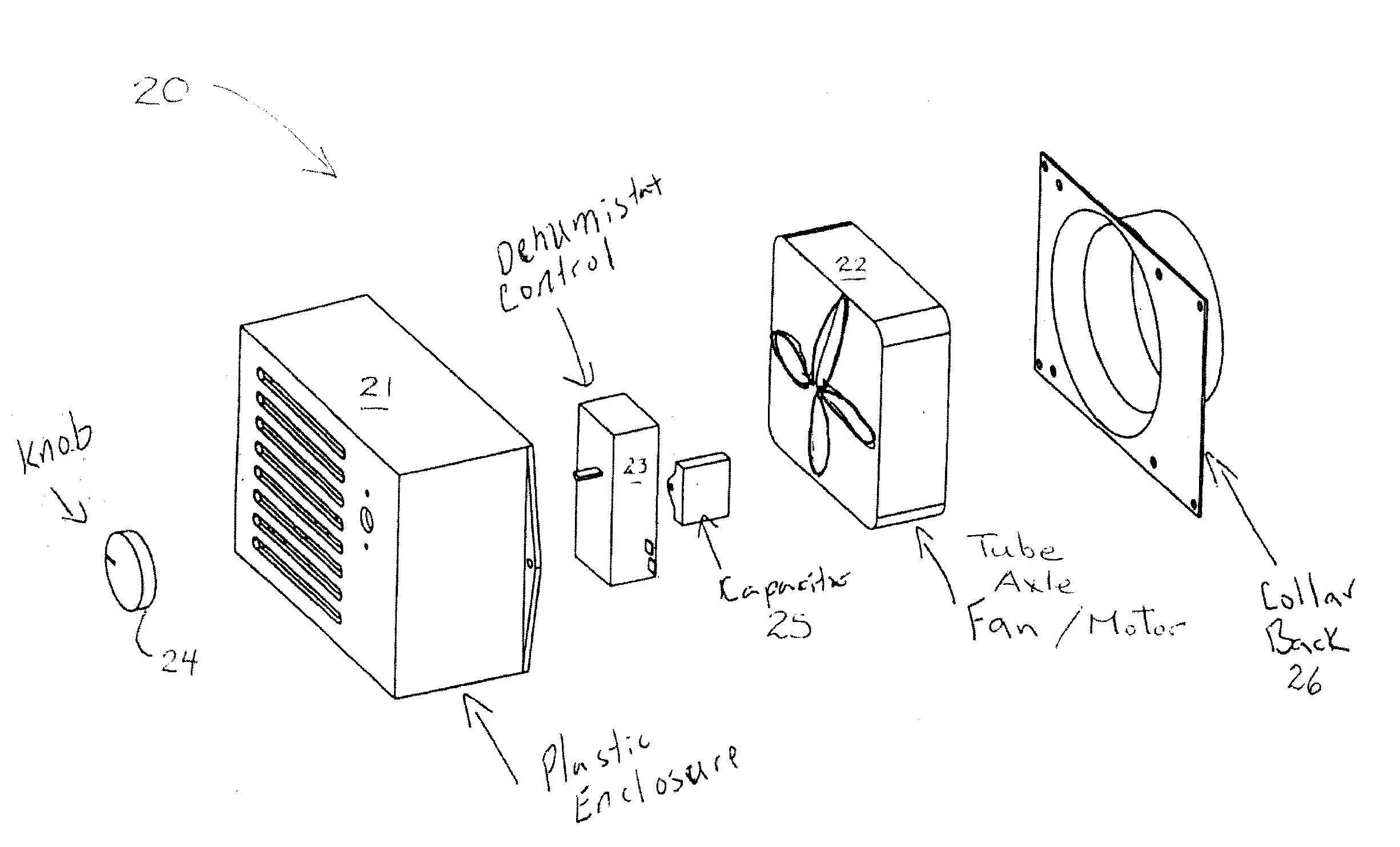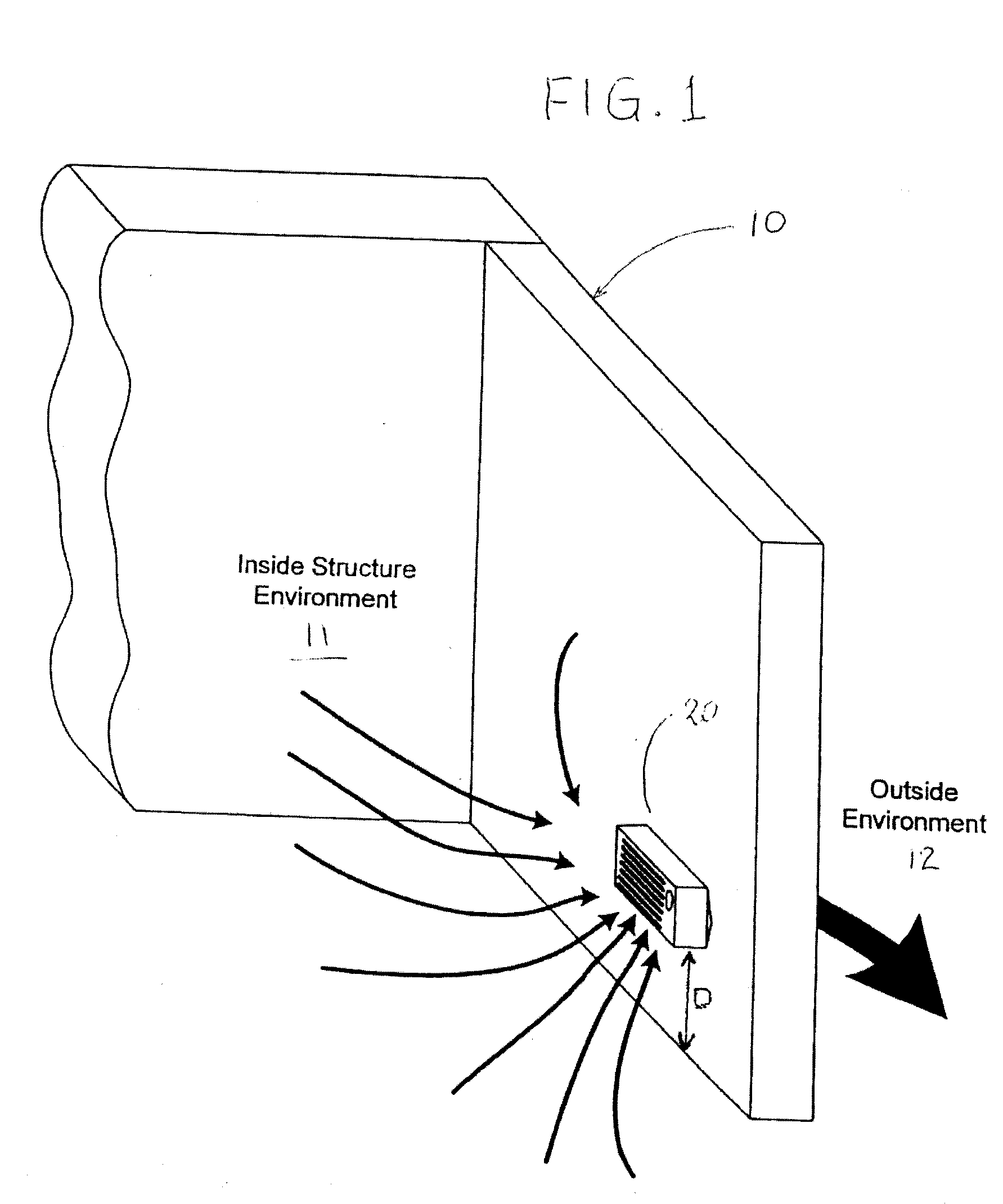Ventilator Device For Dehumidification
a technology of dehumidification and ventilator, which is applied in the direction of heating types, instruments, domestic cooling apparatus, etc., can solve the problems of humidity and excess moisture or condensation, damage to contents and the structure itself, and damage to the structure, so as to reduce the humidity in the structure, reduce the humidity, and remove the stalest and dampest air
- Summary
- Abstract
- Description
- Claims
- Application Information
AI Technical Summary
Benefits of technology
Problems solved by technology
Method used
Image
Examples
Embodiment Construction
[0015] As may be seen from FIG. 1, an enclosed structure, such as a garage, pool shed or similar annex or out building, is represented, in part, by wall structure 10. The ventilation and dehumidification device is generally indicated at 20, located a distance D above the floor of the structure. Although the distance D is not fixed, it is preferable to be in proximity to the floor.
[0016] It is to be understood that the present device may be located at any height on an exterior wall of a structure. However, the device works more efficiently in general proximity to the floor level of the structure where accumulated moisture will collect, and where cooler damp air is present. Warmer air, at higher points within the structure, will then be drawn downwardly to replace exhausted air, thereby interacting with floor level moisture, and absorbing same prior to being exhausted. As the device is located higher from the floor of the structure, its efficiency is reduced, but it will still remove...
PUM
 Login to View More
Login to View More Abstract
Description
Claims
Application Information
 Login to View More
Login to View More - R&D
- Intellectual Property
- Life Sciences
- Materials
- Tech Scout
- Unparalleled Data Quality
- Higher Quality Content
- 60% Fewer Hallucinations
Browse by: Latest US Patents, China's latest patents, Technical Efficacy Thesaurus, Application Domain, Technology Topic, Popular Technical Reports.
© 2025 PatSnap. All rights reserved.Legal|Privacy policy|Modern Slavery Act Transparency Statement|Sitemap|About US| Contact US: help@patsnap.com



